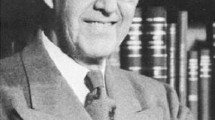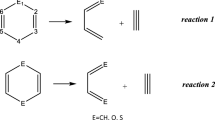Abstract
The participation of 4-substituted-1,2,4-triazoline-3,5-diones (TADs) in Diels-Alder reactions toward a series of dienes is studied at the M05-2X/6-31+G(d,p) level. These reactions show very low activation energies and complete endo selectivity, in agreement with the experimental data. For a dienic steroid model, the reaction presents an α-facial selectivity. Analysis of reactivity indices explains the superelectrophilic character of TADs, and low activation energy. The substituent and solvent effects are also evaluated.

The Diels-Alder reactions between 4-substituted-1,2,4-triazoline-3,5-diones (TADs) and a series of dienes are studied by DFT computations at the M05-2X/6-31+G(d,p) level. Our computations support a series of features listed as follows: 1) low activation energies, 2) complete endo selectivity, 3) the superelectrophilic character of TADs, 4) the high electrophilicity index of TADs, and 5) the high asynchronycity found in the reaction performed with a steroidal model. Substituent and solvent effects are also analyzed



Similar content being viewed by others
References
Mallakpour SE, Butler GB (1989) Modification of polymers via electrophilic aromatic-substitution. J Polym Sci A Polym Chem 27:125–138
Mallakpour SE, Butler GB (1989) Uncatalyzed polymerization of bistriazolinediones with electron-rich aromatic-compounds via electrophilic aromatic-substitution. J Polym Sci A Polym Chem 27:217–235
Klindert T, Seitz G (1996) 4-Phenyl-1,2,4-triazoline-3,5-dione: a novel dehydrogenating agent for dihydropyridazines. Synth Commun 26:2587–2596
Cookson RC, Gupte SS, Stevens IDR, Watts CT (1988) 4-Phenyl-1,2,4-triazoline-3,5-dione. Org Synth Coll 6:936–940
Borhani DW, Greene FD (1986) Triazolinediones—conversion to deaza dimers by electron-transfer catalysis—a possible radical-anion diels-alder reaction. J Org Chem 51:1563–1570
Christoforou A, Nicolaou G, Elemes Y (2006) N-phenyltriazolinedione as an efficient, selective, and reusable reagent for the oxidation of thiols to disulfides. Tetrahedron Lett 47:9211–9213
Bazgir A, Seyyedhamzeh M, Yasaei Z, Mirzaei P (2007) A novel three-component method for the synthesis of triazolo 1,2-a indazole-triones. Tetrahedron Lett 48:8790–8794
Cases M, Duran M, Mestres J, Martin N, Sola M (2001) Mechanism of the addition reaction of alkyl azides to 60 fullerene and the subsequent N-2 extrusion to form monoimino- 60 fullerenes. J Org Chem 66:433–442
Elemes Y, Foote CS (1992) Stepwise mechanisms in the ene reaction of alpha, beta-unsaturated esters with N-phenyl-1,2,4-triazoline-3,5-dione and singlet oxygen—intermolecular primary and secondary hydrogen isotope effects. J Am Chem Soc 114:6044–6050
Garner P, Ho WB, Grandhee SK, Youngs WJ, Kennedy VO (1991) Development of an asymmetric approach to the 3,8-diazabicyclo 3.2.1 octane moiety of quinocarcin via intermolecular 1,3-dipolar cycloadditions of photochemically generated azomethine ylides. J Org Chem 56:5893–5903
Jensen F, Foote CS (1987) Reaction of 4-phenyl-1,2,4-triazoline-3,5-dione with substituted butadienes—a nonconcerted Diels-Alder reaction. J Am Chem Soc 109:6376–6385
Lai YC, Mallakpour SE, Butler GB, Palenik GJ (1985) Diels-Alder and ene reactions of 4-substituted 1,2,4-triazoline-3,5-diones and some substituted styrenes. J Org Chem 50:4378–4381
Anastassiou AG, Yakali E (1972) Generation and thermal bond relocation of cyclononatetraenyl cation. J Chem Soc Chem Commun 2:92
Kobal VM, Gibson DT, Davis RE, Garza DA (1973) X-ray determination of absolute stereochemistry of initial oxidation-product formed from toluene by pseudomonas-pptida 39/D. J Am Chem Soc 95:4420–4421
Poutsma ML, Ibarbia PA (1971) Electrophilic additions to 2-methyl-1-(tetramethylcyclopropyliden)propene—generation of cyclopropylidenecarbinyl cations. J Am Chem Soc 93:440
Barton DHR, Gunatilaka AAL, Nakanishi T, Patin H, Widdowson DA, Worth BR (1976) Synthetic uses of steroidal ring B diene protection - 22,23-dihydroergosterol. J Chem Soc Perkin Trans 1(8):821–826
Fernandez-Herrera MA, Sandoval-Ramirez J, Montiel-Smith S, Meza-Reyes S (2013) A convenient methodology for the in situ oxidation of 4-substituted urazoles. Setting up a one-pot procedure for the efficient protection of dienes. Heterocycles 87:571–582
Domingo LR, Sáez JA (2009) Understanding the mechanism of polar Diels-Alder reactions. Org Biomol Chem 7:3576–3583
Parr RG, Von Szentpaly L, Liu SB (1999) Electrophilicity index. J Am Chem Soc 121:1922–1924
Domingo LR, Chamorro E, Perez P (2008) Understanding the reactivity of captodative ethylenes in polar cycloaddition reactions. A theoretical study. J Org Chem 73:4615–4624
Zhao Y, Schultz NE, Truhlar DG (2006) Design of density functionals by combining the method of constraint satisfaction with parametrization for thermochemistry, thermochemical kinetics, and noncovalent interactions. J Chem Theory Comput 2:364–382
Frisch MJ, Trucks GW, Schlegel HB, Scuseria GE, Robb MA, Cheeseman JR, Scalmani G, Barone V, Mennucci B, Petersson GA, Nakatsuji H, Caricato M, Li X, Hratchian HP, Izmaylov AF, Bloino J, Zheng G, Sonnenberg JL, Hada M, Ehara M, Toyota K, Fukuda R, Hasegawa J, Ishida M, Nakajima T, Honda Y, Kitao O, Nakai H, Vreven T, Montgomery JA, Peralta JE, Ogliaro F, Bearpark M, Heyd JJ, Brothers E, Kudin KN, Staroverov VN, Kobayashi R, Normand J, Raghavachari K, Rendell A, Burant JC, Iyengar SS, Tomasi J, Cossi M, Rega N, Millam JM, Klene M, Knox JE, Cross JB, Bakken V, Adamo C, Jaramillo J, Gomperts R, Stratmann RE, Yazyev O, Austin AJ, Cammi R, Pomelli C, Ochterski JW, Martin RL, Morokuma K, Zakrzewski VG, Voth GA, Salvador P, Dannenberg JJ, Dapprich S, Daniels AD, Farkas, Foresman JB, Ortiz JV, Cioslowski J, Fox DJ (2009) Gaussian 09, Revision C.01. Wallingford, CT
Fukui K (1981) The path of chemical-reactions—the IRC approach. Acc Chem Res 14:363–368
Marenich AV, Cramer CJ, Truhlar DG (2009) Universal solvation model based on solute electron density and on a continuum model of the solvent defined by the bulk dielectric constant and atomic surface tensions. J Phys Chem B 113:6378–6396
Parr RG, Pearson RG (1983) Absolute hardness—companion parameter to absolute electronegativity. J Am Chem Soc 105:7512–7516
Parr RG, Yang W (1989) Density functional theory of atoms and molecules. Oxford University Press, New York
Kohn W, Sham LJ (1965) Self-consistent equations including exchange and correlation effects. Phys Rev 140:1133–1138
Chen JS, Houk KN, Foote CS (1998) Theoretical study of the concerted and stepwise mechanisms of triazolinedione Diels-Alder reactions. J Am Chem Soc 120:12303–12309
Sauer J, Schroder B (1965) Reactivity of dienophiles and ability to form charge-transfer complexes. Angew Chem Int Ed 4:711
Sauer J (1967) Diels-Alder reactions 2—reaction mechanism. Angew Chem Int Ed 6:16
Domingo LR, Aurell MJ, Perez P, Contreras R (2002) Quantitative characterization of the global electrophilicity power of common diene/dienophile pairs in Diels-Alder reactions. Tetrahedron 58:4417–4423
Jaramillo P, Domingo LR, Chamorro E, Perez P (2008) A further exploration of a nucleophilicity index based on the gas-phaseionization potentials. J Mol Struct THEOCHEM 865:68–72
Acknowledgments
The authors gratefully thank Conacyt (Grants 176863, 176858, and INFRA-2013-01-204586) and VIEP-BUAP (Grants VIEP-247-2013 and VIEP-098-2014). Moshinsky Foundation supported the work in Mérida. The CGSTIC (Xiuhcoalt) at Cinvestav is gratefully acknowledged for generous allocation of computational resources. LRD thanks Universidad de Valencia (Grant UV-INV-AE13-139082). CZ acknowledges Conacyt for the PhD fellowship.
Author information
Authors and Affiliations
Corresponding authors
Rights and permissions
About this article
Cite this article
Fernández-Herrera, M.A., Zavala-Oseguera, C., Cabellos, J.L. et al. Understanding the high reactivity of triazolinediones in Diels-Alder reactions. A DFT study. J Mol Model 20, 2207 (2014). https://doi.org/10.1007/s00894-014-2207-7
Received:
Accepted:
Published:
DOI: https://doi.org/10.1007/s00894-014-2207-7




